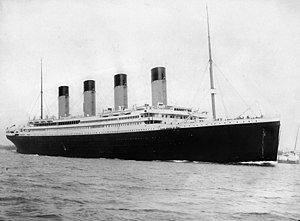https://youtu.be/yxdRTaAp5Fw
Findings -
Titanic still amazes us.
Titanic ..
The water temperature on the night of the Titanic sinking was thought to be about 28 degrees Fahrenheit, just below freezing. Such a temperature was of course lethally cold for all those passengers who had been forced to take to the open water to escape the sinking ship.
How deep is the water that Tiranic sunk in and location?
According to google, "The wreck of the RMS Titanic is located about 370 miles(600 km) south-southeast of the coast of Newfoundland, lying at a depth of about 12,500 feet (3,800)
How Large Was The Iceberg That Sank The Titanic?
The exact size of the iceberg will probably never be known but, according to early newspaper reports the height and length of the iceberg was approximated at 50 to 100 feet high and 200 to 400 feet long.
I am a bit of history buff as you probably have guessed. #titanic #history #maidenvoyage #1912 #iceburgs
Findings -
Titanic still amazes us.
Titanic ..
was a Britishpassenger liner that sank in the North Atlantic Ocean in the early hours of 15 April 1912, after colliding with an iceberg during its maiden voyage from Southampton to New York City. There were an estimated 2,224 passengers and crew aboard, and more than 1,500 died, making it one of the deadliest commercial peacetime maritime disasters in modern history. RMSTitanic was the largest ship afloat at the time it entered service and was the second of three Olympic-class ocean liners operated by the White Star Line. It was built by the Harland and Wolffshipyard in Belfast. Thomas Andrews, her architect, died in the disaster.[2]
So how cold was the water?The water temperature on the night of the Titanic sinking was thought to be about 28 degrees Fahrenheit, just below freezing. Such a temperature was of course lethally cold for all those passengers who had been forced to take to the open water to escape the sinking ship.
How deep is the water that Tiranic sunk in and location?
According to google, "The wreck of the RMS Titanic is located about 370 miles(600 km) south-southeast of the coast of Newfoundland, lying at a depth of about 12,500 feet (3,800)
How Large Was The Iceberg That Sank The Titanic?
The exact size of the iceberg will probably never be known but, according to early newspaper reports the height and length of the iceberg was approximated at 50 to 100 feet high and 200 to 400 feet long.
I am a bit of history buff as you probably have guessed. #titanic #history #maidenvoyage #1912 #iceburgs

Comments
Post a Comment